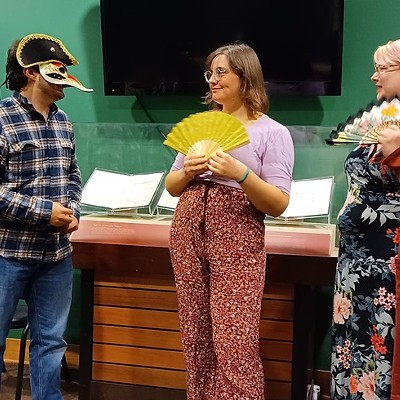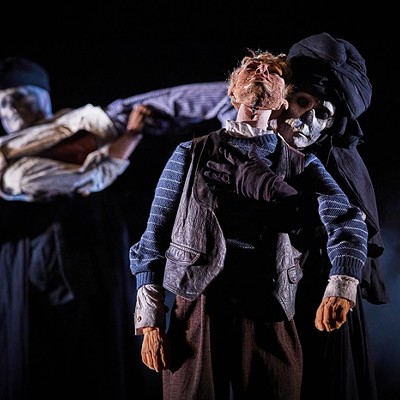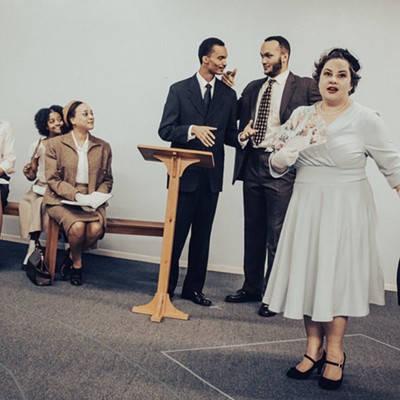Anya Martin and Michelle Carello's new play El Camino takes place in several places on the map: an apartment in Pittsburgh; a detention center for undocumented immigrants in Texas; a bedroom in Los Angeles. But as a work-in-progress workshop on Aug. 26 showed, the drama of El Camino occurs more in a place of maps.
In Camino, a documentary filmmaker named Justin (played by Mark Staley) interviews Andoni (Joel Ripka), an inmate in solitary confinement at the detention center. In transit, Justin heeds the robotic voice of a GPS map, just as Andoni was guided from Honduras by a mythological bird named Camino (puppeteer Kellee Van Aken), who recalls the Americas before they were "North" and "South."
Meanwhile, the detention system is a privately run, for-profit facility. So to understand an immigrant's plight, Andoni explains, "You have to follow the journey of the money," through the "invisible maps" of the financial world.
El Camino expresses the gray area that is immigration -- an issue so often seen as black-and-white. The play explores ideas of "truth" and "myth," and the difficult questions of where they meet or diverge. It's based on the story of Milton and Stephany Mejia, two very real Pittsburghers who share a Shakespearean love story: she a legal immigrant from Venezuela; he, having swum the Rio Grande at age 16, now facing deportation. (See "Boundless Love," in the Aug. 5 CP.)
But it's also the story of their fictional counterparts, Andoni and Estrella (Erika Cuenca) -- and of Camino, who might exist only in that couple's imagination.
The full house at Lawrenceville's Grey Box Theatre included many theater folk. Martin and Carello are Carnegie Mellon-affiliated stage professionals well known locally as a playwright and a designer, respectively.
But the audience also included Latino teen-agers and immigrants-rights activists whom the artists met while working to gain Mejia's release from a real immigrant detention center.
Their questions and comments in the lively post-performance discussion fell along those cultural lines: activists who wished "the message" were expressed more clearly, artists who wanted it more obscured. So perhaps the central artistic choice of El Camino is: Shall this be a political statement dramatized, or a drama that opens a political quandary?
It's the same question Andoni poses to Justin in the play itself: Explaining himself as a documentarian, Justin says he's looking for only "the truth" about immigrants; that he wants to hear only "true stories." Andoni responds, quizzically, "What other kinds of stories are there?"
Illegal immigration, as an issue, is a series of myths and facts often separated only by a shallow river easily swum. El Camino's best scenes tread water midstream and show immigration to be as complex and un-mapped as humans themselves.
Martin and Carello staged their in-progress creation because of a certain urgency: Milton Mejia, the basis for "Andoni," must leave for Honduras under voluntary deportation this week. The artists wanted him to see what's being made of his story. Hopefully, one day, he can return to see El Camino fully formed -- and recognize that, through art, a little of his life remained in Pittsburgh.














